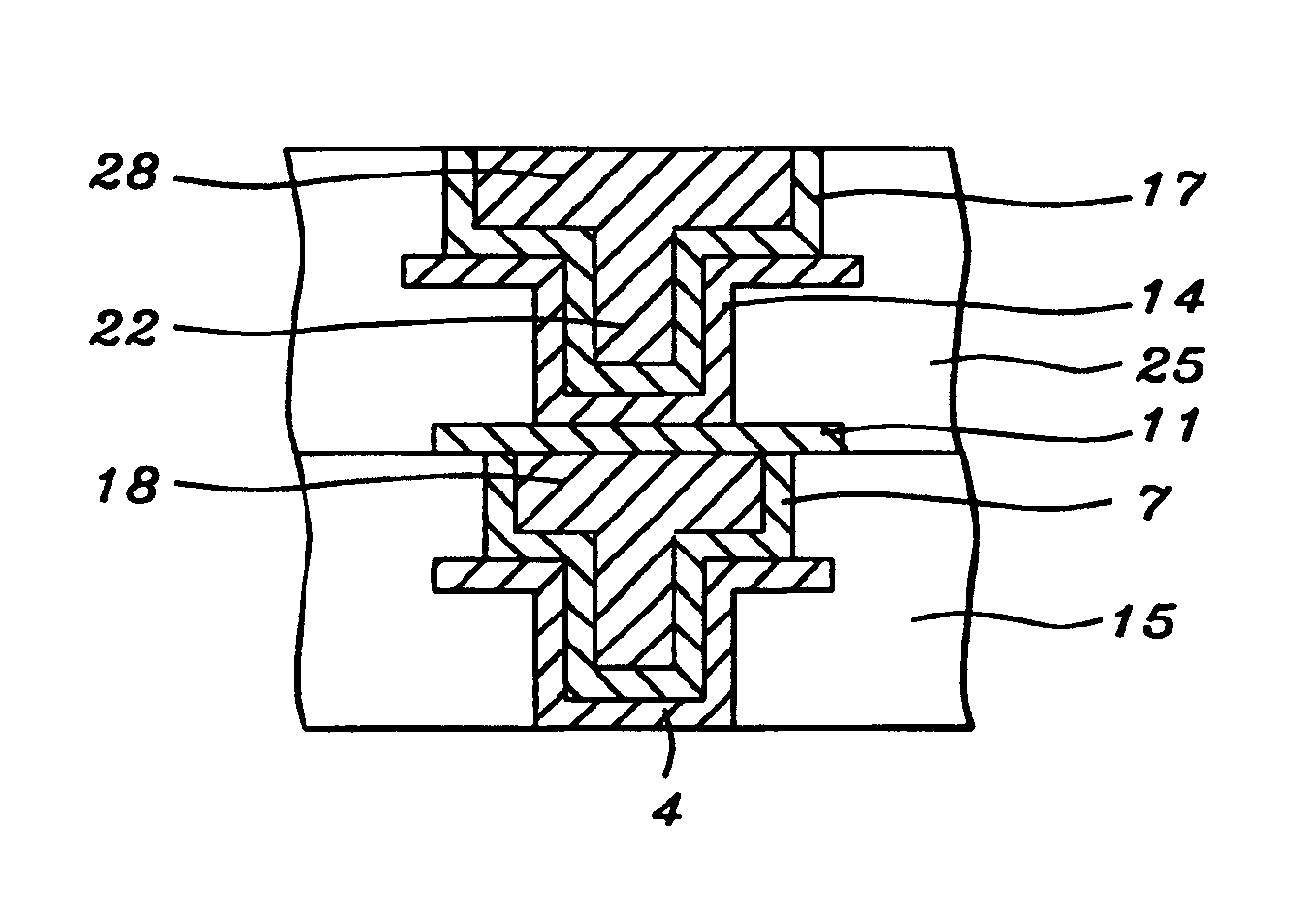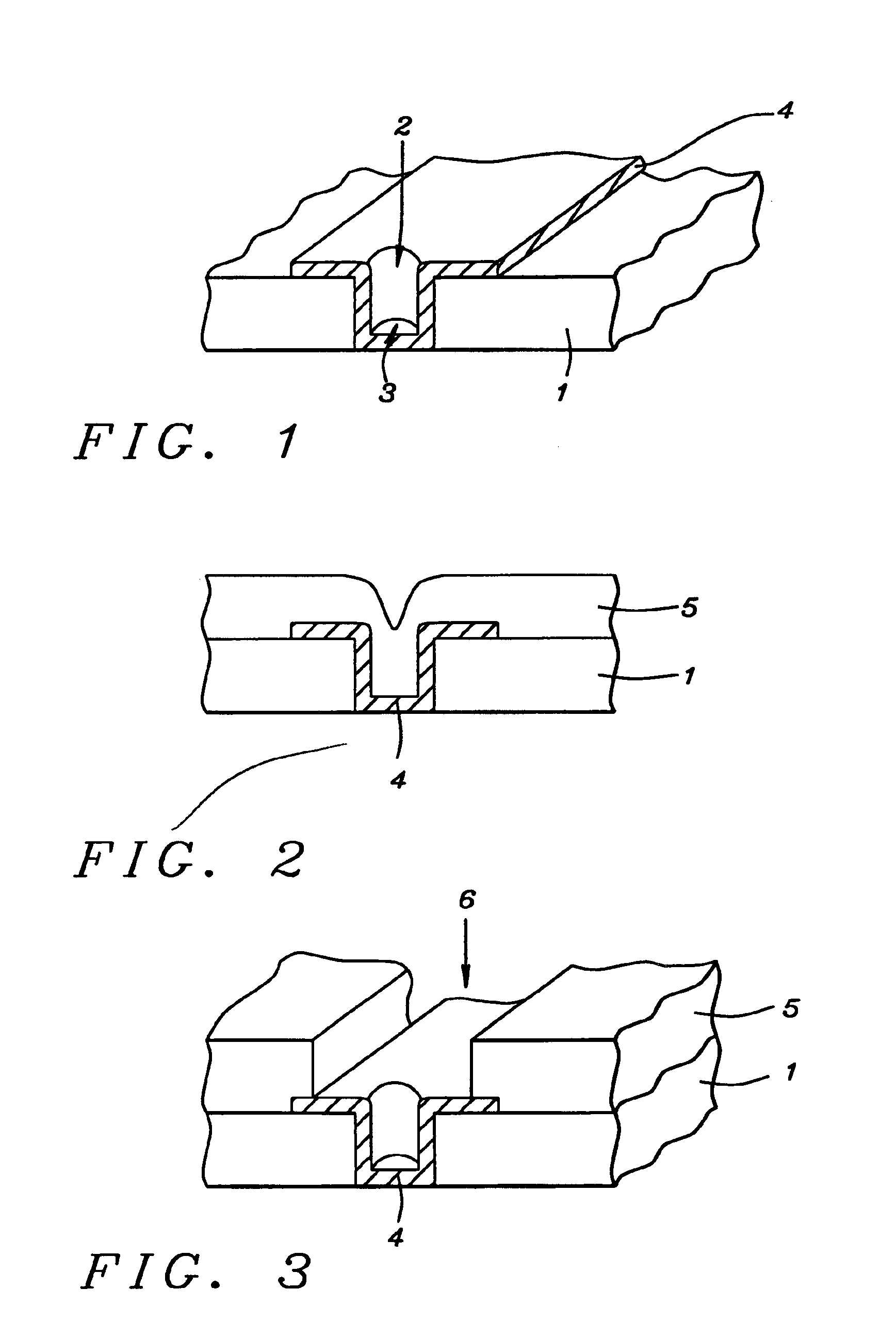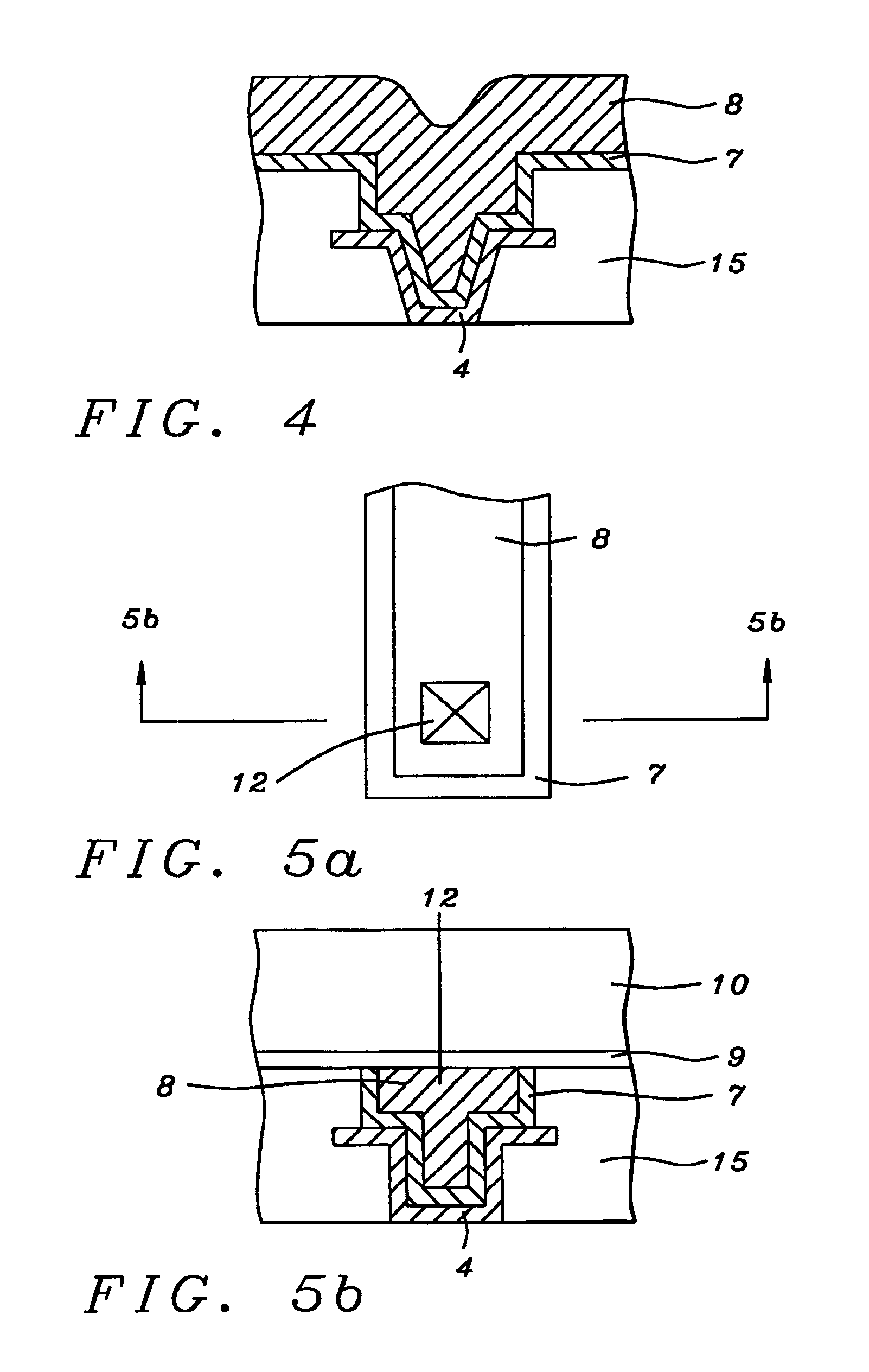Etch stop for copper damascene process
- Summary
- Abstract
- Description
- Claims
- Application Information
AI Technical Summary
Benefits of technology
Problems solved by technology
Method used
Image
Examples
Embodiment Construction
Referring now to FIG. 1 we begin a description of the dual damascene process. Insulating layer 1 has been deposited onto the upper surface of a partially completed integrated circuit (not shown). Cavity 2 has been etched all the way through layer 1. It is shown as cylindrical in cross-section, but any shape (such as rectangular) could be used. Barrier layer 4 has been deposited to line the walls of cavity 3 and has also been extended outwards from the rim of the cavity for some distance along the top surface of 1.
Insulating layer 5 is then deposited over the structure (as shown in FIG. 2) following which trench 6 is formed by etching all the way through layer 5. Trench 6 is narrower than the extension of barrier layer 4. This allows etching to proceed until cavity 2 has been re-formed without any danger of the etchant attacking layer 1 since layer 4 acts as an etch stop. This is illustrated in FIG. 3.
Referring now to FIG. 4, a second barrier layer 7 is deposited so as to coat the wa...
PUM
 Login to View More
Login to View More Abstract
Description
Claims
Application Information
 Login to View More
Login to View More - R&D
- Intellectual Property
- Life Sciences
- Materials
- Tech Scout
- Unparalleled Data Quality
- Higher Quality Content
- 60% Fewer Hallucinations
Browse by: Latest US Patents, China's latest patents, Technical Efficacy Thesaurus, Application Domain, Technology Topic, Popular Technical Reports.
© 2025 PatSnap. All rights reserved.Legal|Privacy policy|Modern Slavery Act Transparency Statement|Sitemap|About US| Contact US: help@patsnap.com



